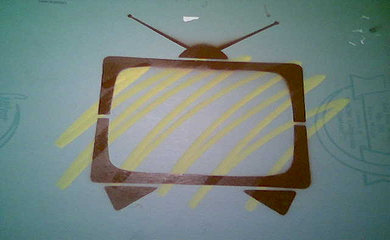More than 40 years after Roe v Wade, how is abortion still a taboo subject on television? Most networks dance around it as though they’re afraid the world will collapse if abortion is discussed, let alone depicted, on television, and the number of TV characters who have opted for abortions and then actually gone through with them is vanishingly scarce. In that climate, it’s probably not a surprise that NBCUniversal initially rejected ads for abortion comedy Obvious Child on the grounds that they violated standards and practices.
For those not familiar, Obvious Child tracks the aftermath of stand-up comedian Donna Stern’s (Jenny Slate) one-night-stand. But it’s not really about Donna’s pregnancy and abortion, except as one story arc. It’s more about a young professional woman struggling to sort her life out, mirroring a growing trend in comedy, like The Mindy Project and Girls, that’s drawing viewers to depictions of flailing young women who can’t seem to find solid ground.
It’s a snappy answer to Juno, everyone’s favourite quirky hit about a young woman who gets pregnant and decides to keep the child. While Juno attracted scores of fans, the fundamental story followed familiar, and irritating, lines, with the assumption that of course the star would ultimately choose pregnancy and delivery, not abortion. While every individual has to make the right personal choice, it’s telling that even in indy film, creators feel pressured to advance traditional conservative narratives about pregnancy and abortion.
Premiering at the Sundance Film Festival, Obvious Child attracted considerable acclaim, and was quickly set for a select national launch. But when the creators approached NBCU with some potential ads, they were turned down. NBCU claims it’s not ‘company practice’ to reject advertisements and programming that include abortion or use the ‘A’ word, but it’s somewhat suspicious that the ads were refused on the basis of Standards and Practices violations.
Obvious Child doesn’t violate television decency laws (which are, admittedly, bizarrely restrictive and confusing), as the film doesn’t depict anything television viewers haven’t seen. Grey’s Anatomy showed an abortion recently, for example, as did Friday Night Lights. While rare, abortions do happen on TV ‐ and characters have been known to say the ‘A’ word, discuss abortion, consider it for themselves, and even decide to pursue the procedure.
The decision not to run the ads was pretty transparent, and Planned Parenthood wasn’t pleased, leaning on the network to demand that it withdraw its original ruling. Ultimately, Planned Parenthood won, but a larger discussion still remains: What is so frightening about abortion, and why are US television networks so terrified of exploring the complex social, institutional, and cultural factors surrounding the procedure? Since US politics have made abortion and choice such looming figures in the US landscape, it seems reasonable to explore them in pop culture as well, and suppressive moves like this one serve not just to stigmatise abortion, but also to create a landscape in which people don’t see honest discussions about it.
Obvious Child isn’t your typical tragedised view of abortion, filled with sadness and misery on the part of the pregnant character as she agonises over the choice. It’s a story about a young professional woman who knows that pregnancy and a child aren’t for her, and who makes the right choice for herself. Her confidence and assertion of rights over her own body reflect real-world choices made by actual pregnant people across the US every day, and bringing that out of the shadows is a social boon.
Standards and Practices tend to skew towards the conservative, with fears about sexuality, profanity, and, evidently, situations in which women exercise bodily autonomy and individual rights. NBCU may have learned its lesson in this case, which will hopefully lead to more careful consideration of such advertisements in the future and a decision to let them through instead of fighting them. But what about other networks, and other advertising venues, including print and radio?
When advertising is restricted on the basis of the content of the media being advertised, or the content of the ad itself, it limits free speech and opportunities for discussion. In the case of counterculture narratives about abortion, such restrictions have real-world effects on people who might be considering abortion, or who are rethinking their personal attitudes about the procedure. The entire point of ads is to expose people to media, encouraging them to engage with it, and if people don’t see ads for Obvious Child because officials somewhere in S&P think it’s inappropriate, that means the film is missing out on a potential chunk of its audience.
That chunk could be a valuable one, including people who might never consider abortion as the subject as a comedy, people struggling with abortion stigma, and people who have an influence on how others think about abortion, like teachers and religious officiants. Individual members of S&P may not support abortion and the right to choose, but it’s not their right to impose their values on the lives of others — and networks need to make this clear.

